Global Virtual Reality Market is estimated to be worth USD 20.5 Billion in 2022 and is projected to grow at a CAGR of 23.4% between 2023 to 2032. The study has considered the base year as 2022, which estimates the market size of market and the forecast period is 2023 to 2032. The report analyzes and forecasts the market size, in terms of value (USD Billion), for the market. The report segments the market and forecasts it by technology, by offering, by device type, by application and region/country.
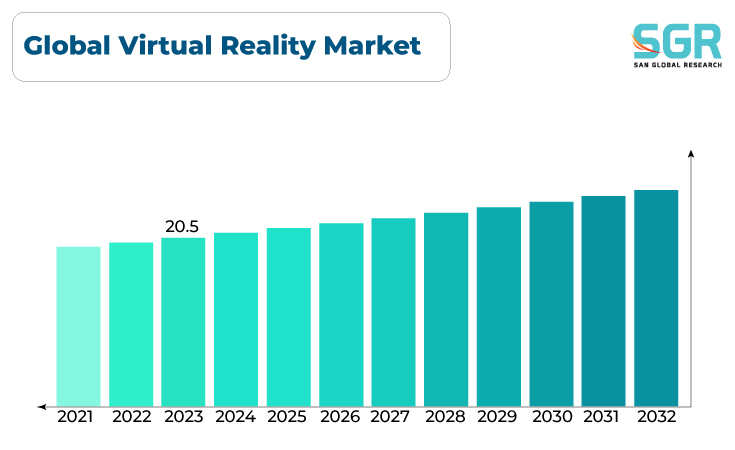
The Global Virtual Reality Market (VR) market has been experiencing significant growth, driven by advancements in technology, increased adoption across various industries, and a growing consumer interest in immersive experiences. The market size was valued at several billion dollars and was projected to grow at a substantial compound annual growth rate (CAGR) over the forecast period. Improvements in hardware, such as more powerful GPUs, better displays, and enhanced tracking systems, have improved the overall VR experience. VR has found applications in gaming, entertainment, healthcare, education, real estate, retail, and more. Businesses are leveraging VR for training, simulation, marketing, and customer engagement purposes. Consumers are increasingly interested in immersive experiences, and VR provides a unique way to engage with content and environments.
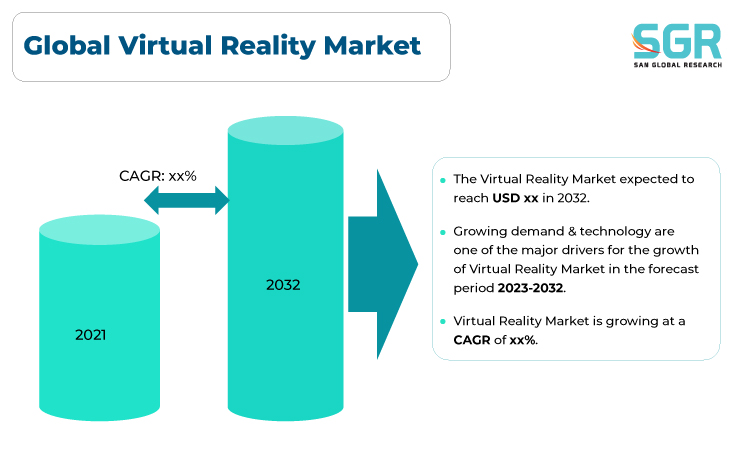
Region wise Comparison:
United States and Canada have been leading the adoption of VR technology. They boast a mature market with a strong focus on VR across various sectors, including gaming, entertainment, healthcare, education, and enterprise applications. Silicon Valley and other tech hubs in North America have been key areas for VR development and innovation, with companies like Face book (Meta), HTC, and Microsoft heavily invested in VR research and development.
Western European countries like the UK, Germany, France, and the Nordic countries have shown significant interest in VR technology. There's a growing market for VR applications in gaming, automotive, healthcare, and education sectors. Several European countries have vibrant VR startup scenes and innovation hubs contributing to the advancement of VR technology.
China, Japan, and South Korea have been major contributors to the VR market in the Asia-Pacific region. China, in particular, has a rapidly growing VR market with significant investments in hardware, software, and VR content. The Asia-Pacific region has seen substantial growth in gaming-related VR applications, but VR is also gaining traction in sectors like healthcare, real estate, and manufacturing.
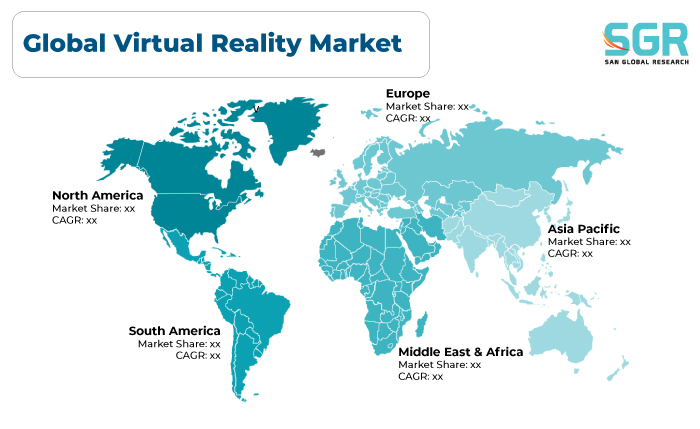
VR adoption in Latin America has been relatively slower compared to other regions due to factors such as economic constraints and less-developed technological infrastructure. However, there is a growing interest in VR technology, especially in countries like Brazil and Mexico, primarily in the gaming and entertainment sectors.
VR adoption in Africa has been limited compared to other continents due to challenges related to infrastructure, affordability, and access to technology. However, there's emerging interest in using VR for educational purposes and training, especially in more developed urban centers.
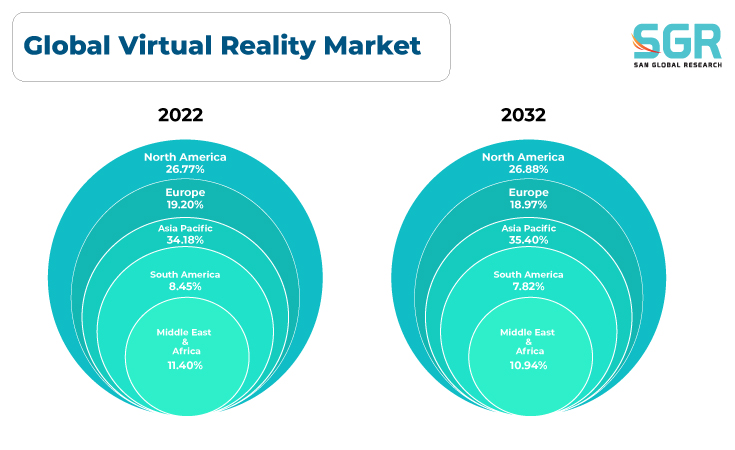
Segmentation:
The Global Virtual Reality Market is segmented by technology, by offering, by device type, by application and region/country.
By Technology:
Based on the technology, the Global Virtual Reality Market is bifurcated into Non Immersive and Semi & Fully Immersive – where the Semi & Fully Immersive is dominating and ahead in terms of share.
Semi-immersive VR typically involves less sensory engagement and immersion compared to fully immersive experiences. It often utilizes technologies like large screens, projection systems, or desktop setups that allow users to interact with a virtual environment without complete isolation from the physical world.
Fully immersive VR provides a high level of sensory engagement, often achieved through head-mounted displays (HMDs) that cover the user's field of view and often include motion tracking and interactive controllers.
By Offering:
Based on the Offering, the Global Virtual Reality Market is bifurcated into Hardware & Software – where Hardware is dominating and ahead of Software in terms of share.
By Device Type:
Based on the Device Type, the Global Virtual Reality Market is bifurcated into Head Mounted Displays, Gesture Tracking Devices & Projectors & Display Walls – where the Head Mounted Displays is dominating and ahead of others in terms of share.
By Application:
Based on the Application, the Global Virtual Reality Market is bifurcated into Consumer, Commercial, Enterprise, Healthcare, Aerospace & Defense and Others – where the Consumer is dominating and ahead of others in terms of share.
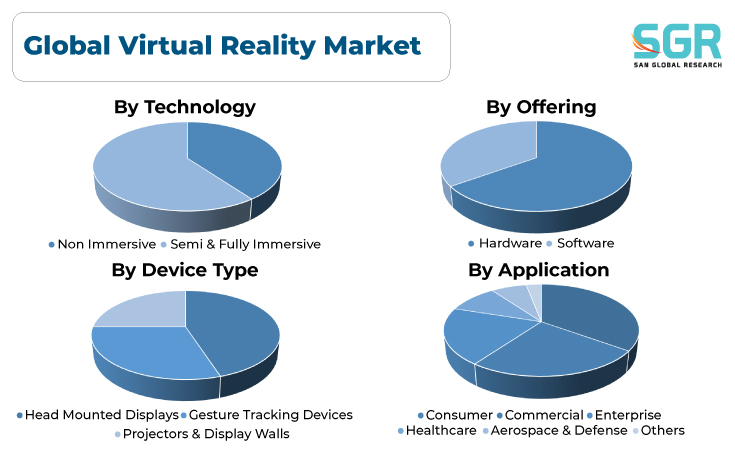
On the basis of region
- North America
- Europe
- Asia Pacific
- South America and
- Middle East and Africa
In 2022, North America is anticipated to dominate the Global Virtual Reality Market with market revenue of XX USD Million with a registered CAGR of XX%.
Key Players:
The key market players operating in the Global Virtual Reality Market include
- SONY
- SAMSUNG
- MICROSOFT
- HTC
- OCULUS
- EON REALITY
- VUZIX
- CYBER GLOVE SYSTEMS
- LEAP MOTION
- SIXENSE CORPORATION
Drivers:
Growing sector across the globe
The global virtual reality (VR) market is propelled by several key drivers that have fueled its growth and expansion across various industries. Technological advancements remain a primary driver, with continual improvements in VR hardware and software, including high-resolution displays, enhanced tracking systems, and more powerful GPUs, offering users increasingly immersive experiences. The widespread adoption of VR across multiple sectors, including gaming, entertainment, healthcare, education, and enterprise applications, serves as another significant driver. Additionally, the increasing demand for immersive and interactive content, coupled with a rising consumer interest in experiencing virtual environments, has been a driving force behind the market's growth. Moreover, the integration of VR into business processes for training, simulations, marketing, and customer engagement has heightened its relevance, contributing to its expanding market footprint. As these drivers continue to evolve alongside technological innovation and the development of compelling VR content, they remain pivotal in propelling the global VR market forward.
Opportunity:
Evolving Market
The global virtual reality (VR) market presents a plethora of opportunities poised for robust expansion and innovation across various industries. One significant opportunity lies in the continued development and refinement of VR hardware, software, and content, creating more immersive and compelling experiences for consumers and businesses alike. The convergence of VR with other technologies like augmented reality (AR), mixed reality (MR), and artificial intelligence (AI) offers a fertile ground for exploring new applications and solutions. Industries such as healthcare, education, real estate, retail, and manufacturing have yet untapped potential in leveraging VR for training, simulations, immersive learning experiences, virtual meetings, product visualization, and more. Moreover, the advent of 5G technology and its widespread deployment can significantly enhance VR experiences by enabling faster data transmission, reduced latency, and higher network capacity, paving the way for more seamless and interactive VR applications. As businesses and consumers increasingly embrace VR, the market presents ample opportunities for innovation, collaboration, and the creation of transformative experiences across diverse sectors, shaping the future landscape of immersive technology.
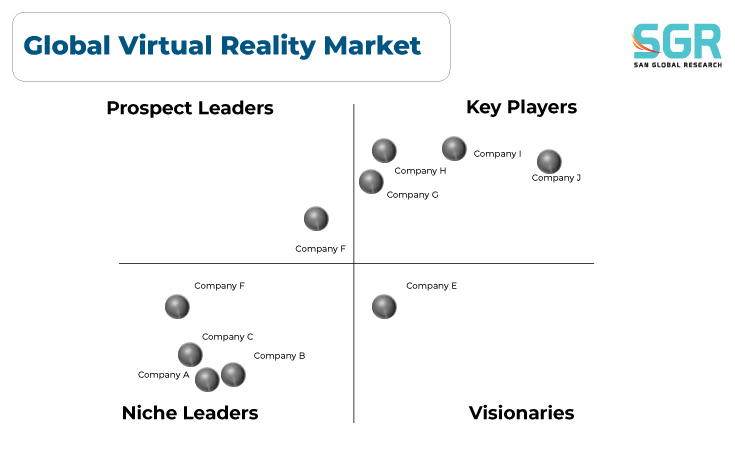

 Description
Description
 Gera Imperium Rise,
Gera Imperium Rise,  +91 9209275355
+91 9209275355


